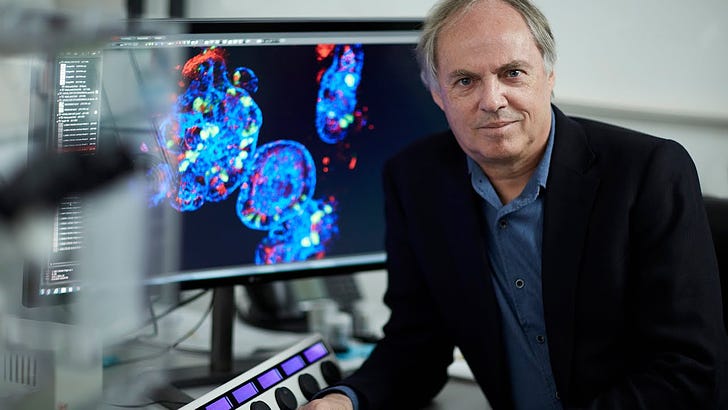Scientist Stories: Hans Clevers, Stem Cell based Organoids in Human Disease
Top builders in biotech
Axial: https://linktr.ee/axialxyz
Axial partners with great founders and inventors. We invest in early-stage life sciences companies such as Appia Bio, Seranova Bio, Delix Therapeutics, Simcha Therapeutics, among others often when they are no more than an idea. We are fanatical about helping the rare inventor who is compelled to build their own enduring business. If you or someone you know has a great idea or company in life sciences, Axial would be excited to get to know you and possibly invest in your vision and company . We are excited to be in business with you — email us at info@axialvc.com
Hans Clevers is a pioneer in organoids and the first to identify stem cells in the intestine. He is currently the Head of Pharma Research and Early Development (pRED) at Roche. Starting there in March 2022, where before he was a group at the Hubrecht Institute starting in 2002.
Born in 1957 and raised in the south of the Netherlands, Clevers studied biochemistry and medicine in Utrecht. After earning his PhD in immunology in 1985, he went off to Harvard for a postdoc. Heading back to Utrecht in 1989 to become a professor in immunology at the university hospital. Where his lab’s work focused on the Wnt developmental signaling pathway. In 1991, his lab cloned a T-cell specific transcription factor that we termed TCF1. Then was able to demonstrate the link between Wnt signaling and adult stem cell biology by showing that TCF4 gene disruption leads to the abolition of small intestine crypts, while targeted knockout of the TCF1 gene severely disables the stem cell compartment of the thymus. At the same time (and with Bert Vogelstein) he showed that activating Wnt mutations underly colon cancer. Leading his toward the cancer and stem cell fields. Ultimately, guiding his lab to invent technologies to grow human stem cells into mini-organs (organoids) in a dish.
His lab has been able to grow “mini-intestines” from stem cells, an essential first step toward regenerative medicine. And establishing the technical foundations to use organoids as an avatar for patients.
Organoids are self-organizing three-dimensional tissue cultures derived from stem cells. They can be used to model the development and function of human organs, offering advantages, and disadvantages over the traditional drug discovery process where new drugs are first tested in cell cultures or animal models. Offering a more realistic view on disease than a cell line but costing more. And organoids can resemble patients better given they are from human cells but may not mimic physiology as well as an animal model. At least yet.
Organoids can be used to screen potential drugs for safety and efficacy. They can also be used to study the mechanisms of disease and to develop personalized treatments for individual patients. It has taken 2-3 decades to get to the point where organoids are close to impacting medicine. As reproducibility in manufacturing improves, they will likely find their place in the drug development process alongside cell culture and animal models versus outright replacing them.




